Sauntering Sarajevo, Capital City of Bosnia and Herzegovina
Dave the motorhome is at Camping Oaza (N43.82950 E18.29685), on the outskirts of Sarajevo, Bosnia. The site’s open plan, no marked pitches; we greedily grabbed a wide area of shade, enjoying a cool after-drive sleep after the 40 degree heat of Mostar.
Ending up in last night’s camp site turned out to be a real roller coaster. Sacha and his family have been Mostar residents for well, ever, and he was more than happy to talk politics and war. He came across as a reasonable man, albeit a shifty character; telling us when ‘his guests’ ask why there was a war, his answer is ‘I don’t know’. His longer version of this answer is that the Croats (Roman Catholic), Bosniaks (Muslim) and Serbs (Orthodox) have always got along nicely here. Marshal Tito, he tells us, was a great man, and kept the later wartime national leaders and protagonists in check by imprisoning them. With Tito dead, these politicians were the ones to cause war, not the people themselves. He was angry that fighters travelled hundreds of miles to his country, from Croatia and Serbia, just to make war. He held a low opinion of the US, asking us ‘if you had a problem in your house, would you be happy if a policeman came in to fix it’? It seemed to me that US intervention (diplomacy and military force) halted a devastating, destructive war. Being on Sacha’s turf, with his big dog sat next to me, I made no point.
During the evening as we all chatted and drank, Sacha would disappear, sometimes not stepping back into the light for an hour or more. The first time he left us, we all asked if anyone knew how much the camp, or the beer, or grappa cost? Nope, none of us knew. No tally was being kept of the drinks, Sacha pointed at the heavy half litre glasses, and the beer tap, silently telling us to help ourselves. When one of us broached the subject, a long discussion took place. The beer was €3 a glass, then €2, then the first beer was free, then it was ‘all inclusive’ for ‘my guests’. The cost of the camping, no-one knew.
Eventually a price list appeared, which was rapidly ignored. We settled on €20 for a night’s camping, with electricity, 4 or 5 beers, 3 bottles of Radler (shandy – hey, it was hot) and a shot of grappa. Seemed a good deal, but as a labourer here makes €25 a day, who knows? Maybe East really does meet West here, and this haggling is the way of it? For the experience of meeting and talking with Sacha, it was well worth the money. The unnerving stalking of Charlie by his doberman, including bear-like scrabbling at the side of the van, was unnerving – if you have a dog, make sure to ask Sacha to tie his up before you let ’em out. He will do happily, as he smilingly admitted at one point a stray cat and dog had been eaten by his Doberman after unwittingly straying onto the site (don’t tell Charlie).
Freddie and Kate, the just-of-uni-twenty-somethings, travelling in their old mini, put us to shame with their ‘can do’ attitude. Sacha was immediately keen to drive it to the nearby town, Freddie obliged, and we listened as he squeezed his bulk inside and revved it off up the road to honk it’s tinny horn at all his village friends. They’d travelled through countries which us stick-in-the-mud old motorhomers wince away from, Albania in particular. No problems, great people, rubbish roads.
The road from Mostar to Sarajevo was smooth, the countryside becoming greener, the valley sides steeper. For miles the road was blasted from a steep rocky valley side, the raw scar held in place with a continual sheet of heavy metal netting. Dirty tunnels removed the need for switch-backs, all being lit but one, which pumped a shot of adrenalin; my prescription sun-glasses plunged us into ‘sheese-where-are-the-sides’ darkness. Wide blue rivers and lakes take up position below the road, beautiful and all but ignored by the fledgling tourist industry. Spotting a lakeside camp, the first since Mostar and about and hour’s driving, and I’m tempted to pull in. The stop-watch is ticking on our 5 day’s insurance, pushing us on for another hour. The landscape is intriguing, hay stacked into domes, held together like party food using a branch thrust into the top. Empty houses dotted long the route have us wondering what happened to them; we assume they were burned, since there’s little left but a shell.
There is, as far as we know, only one campsite in Sarajevo. It’s a few km from the town, a museum-piece of a tram, rickety, is wrestled along the track by the driver. Tickets cost 1.60KM per person each way, about 65p for a ride of a few miles. The tram station, a short walk through an area which resembles post-accident Chernobyl, is a faded affair. Although a predominantly Muslim city, the clothes are Western, head scarves worn by elder ladies point to a waning conservatism. The station, the buses, trams appear devoid of vibrancy, transferring this lacklustre feel to the milling inhabitants. The experience in the city was rather different.
Stepping off the tram, a minute’s walk find us in the spot where Archduke Franz Ferdinand was assassinated, unexpectedly kicking off a millions-killer war, is marked by a stone plaque and a museum. The young man who killed Franz and his wife, shot them as their driver reversed from a wrong turn. His sepia portrait stares defiantly out from the museum window, a dull sheen of fear in his eyes.
Sarajevo is a John Simpson kind of place to me. I’m fairly certain I remember seeing him on TV, sporting a blue stab vest and UN helmet, squatting next to an artillery piece perched above a far-flung city looking a little like this one, and flinching as it fired. John Simpson, veteran reporter from the world’s wars, is not the kind of person you want working in your city. Sarajevo was surrounded by the Serb army in the early 90’s after they failed to take it from the ground (well summarised on the BBC website). Blocking off all entrances, destroying water, heating and power, these ‘soldiers’ launched hundreds of rockets and mortars a day at the city below. The place was devastated, thousands were killed and injured, life for years was, we can only assume, a living hell.
John Simpson, if he was ever here, left a long time ago. The wartime leaders have generally gone to prison, for ever. EU cash has flowed in; Ju thinks it’s guilt money for failing to act earlier. The destroyed buildings and shattered windows are no more; just a few remain, alongside the clusters of white marble gravestones set alongside the hillside. The city is a colourful and animated place. A lady who, we assume, would have survived the terror, smiled as she served us mouth-watering cevapi (minced lamb and beef in a pitta). Buildings, a few still acne-scarred by shrapnel, draw the eye, ranging from the dull to the delightful. A line of al fresco restaurants compete for the punters with flat panel TVs; football and tennis do OK, snooker and the Tour de France are roundly ignored.
There is a house in my home town which was blown up by a gas leak, it’s owner falling through the floor and waking up to find he no longer had a home. The re-builders used coloured bricks to form a phoenix on the wall, rising from the ashes. You can see where I’m going with this. Sarajevo is no longer a place to come and see destruction. We admit we wanted to see some, despite ourselves. It’s not there any more, the city was busy gearing up for a film festival when we left it, people were milling around drinking in cafes, English and America music dances into the streets. This place has moved on with its life, we’re glad.
- Countryside on the road from Mostar to Sarajevo
- Grass-drying, Bosnia style.
- Much of Bosnia is nothing, rock and scrub. We travelled for a couple of hours, spotting one small town and a few hamlets like this.
- Sarajevo’s rickety trams, on the tracks, just.
- A world war started on this spot. It feels strange to stand here.
- Some bits of stone are harder to repair than others we guess. This is the foot of a Sarajevo church.
- A ‘Sarajevo Rose’; red marks the spot where a mortar dropped from above, one of hundreds each day.
- The names of the dead, killed while shopping in a Sarajevo market.
- Not everyone’s family could afford marble. A grave in Sarajevo.
- Cevapi, tasty and cheap. €8 for two plates, and two drinks.
- Go Freddie go! Is that a WW1 rifle, you have there, with Tito in the background, above a few mortar shells?
Cheers, Jay

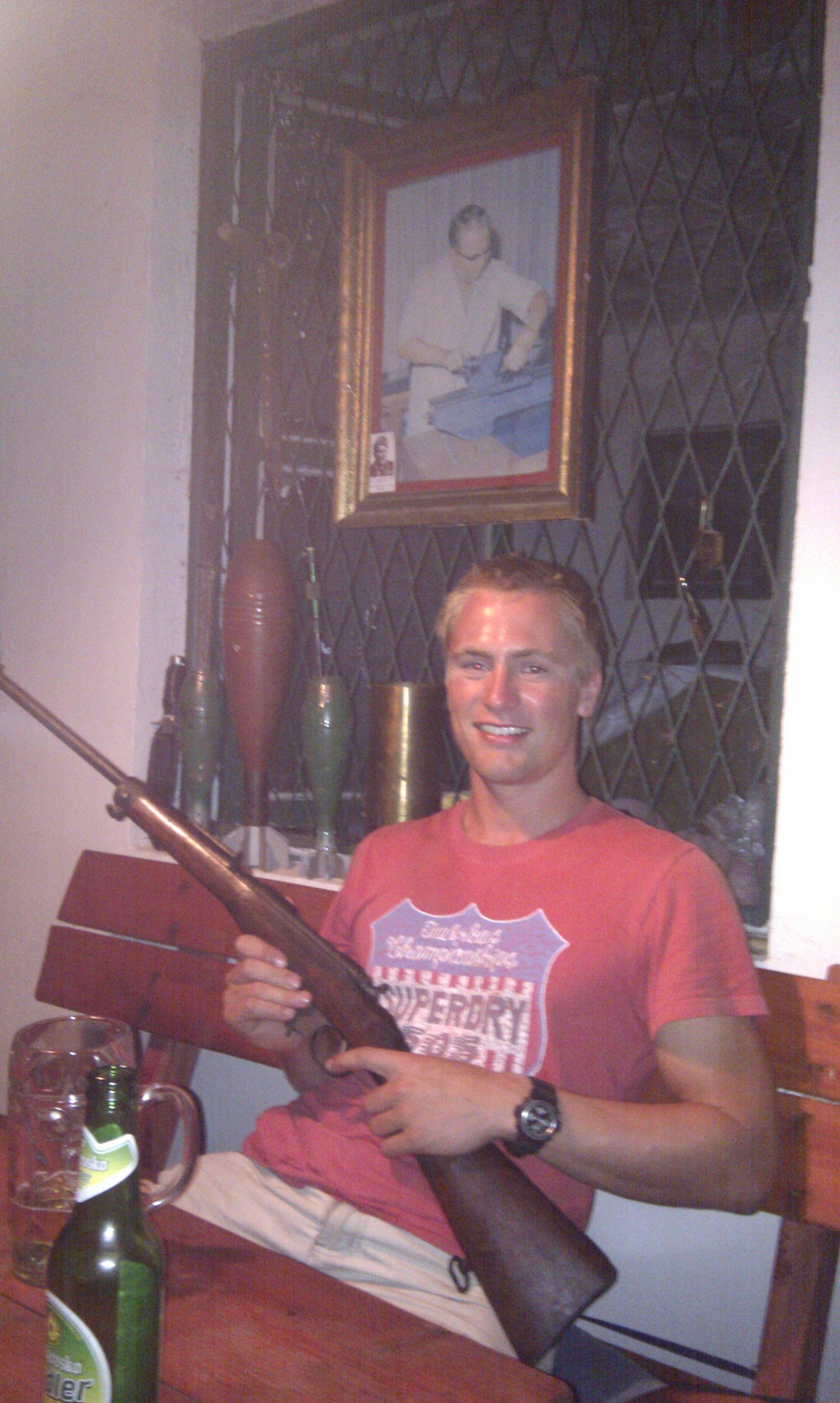

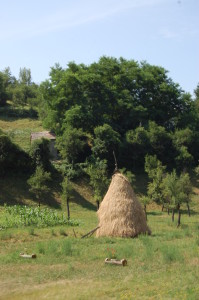
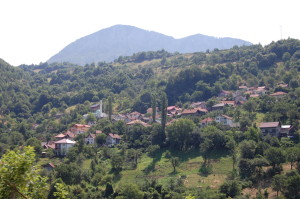
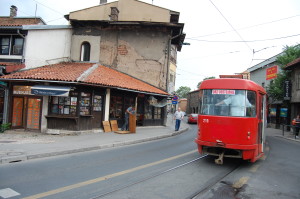
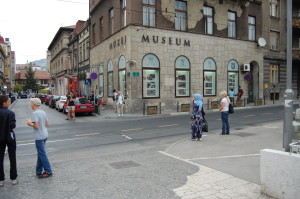
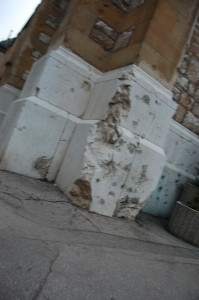

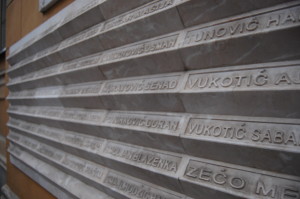
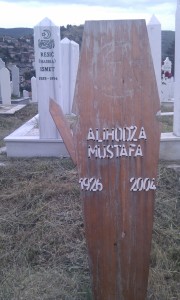
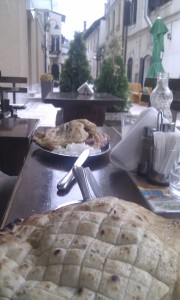
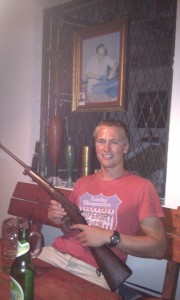
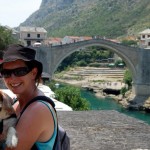
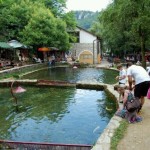
You definitely have a way with words. The descriptions are superb, one can imaginge what you are looking at and experiencing at that point in time. Keep it up and keep enjoying yourselves.
amazing, you guys! xx